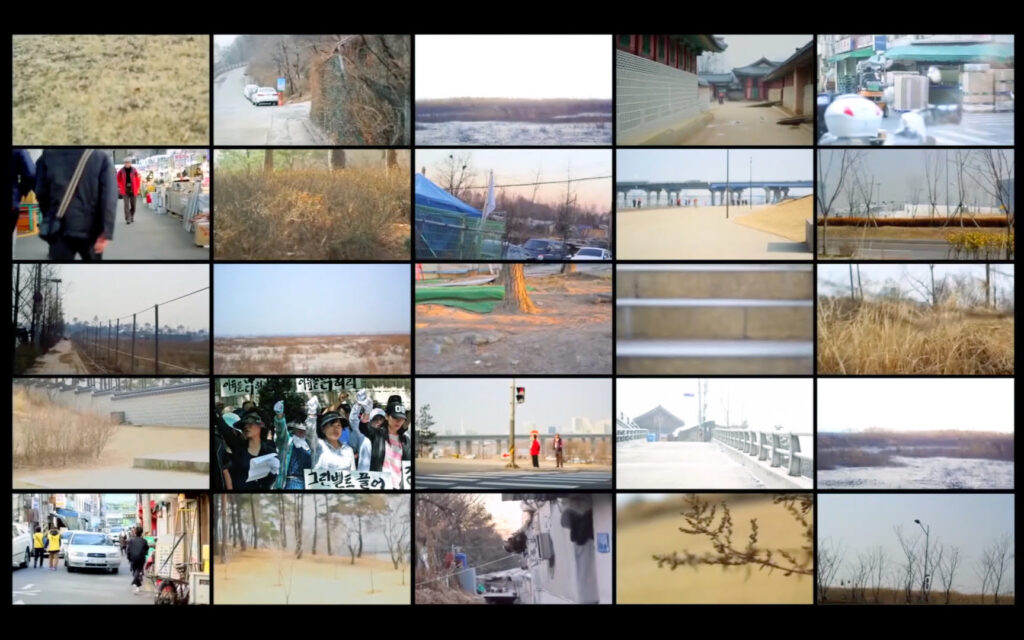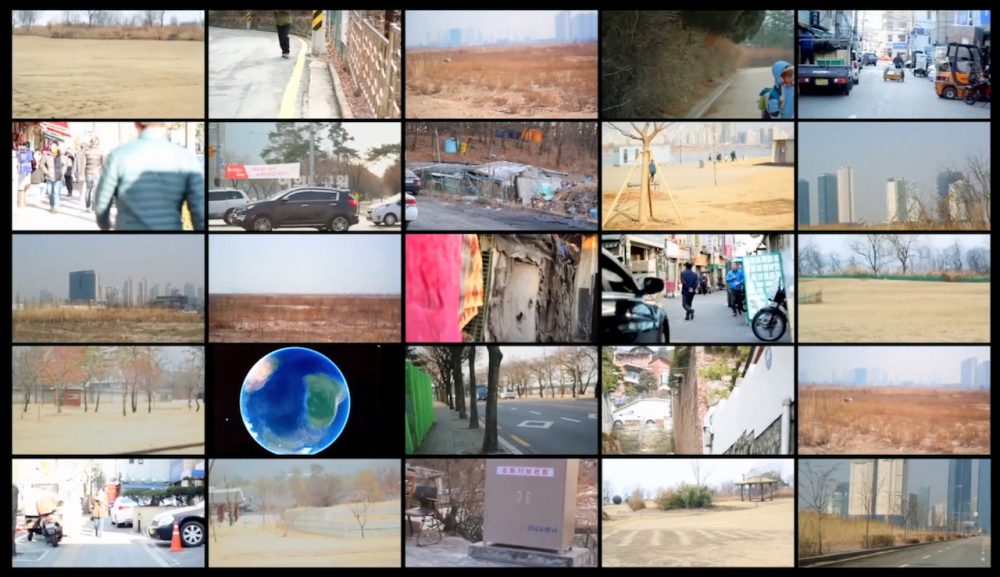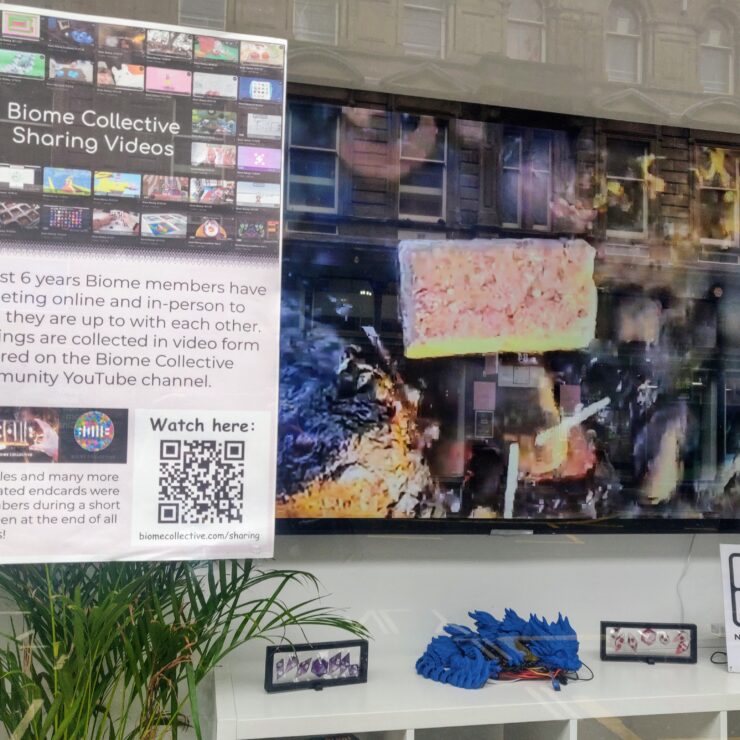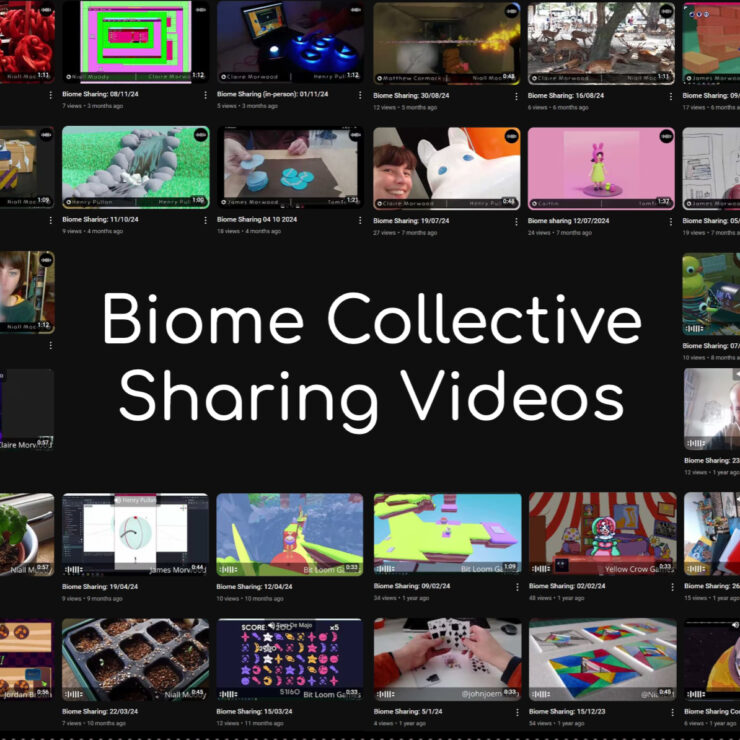NEoN speaks with Linda Havenstein

Linda Havenstein is a digital artist and filmmaker living in Berlin, whose work touches upon ideas of spatial relation, personhood, and the physical/virtual dichotomy. She is currently developing a series of walks within Dundee for NEoN.
What are you currently working on, and what currently excites you?
Generally I’m interested in examining ideas and relationships of physical, digital and virtual spaces, and how that relates to the perception of the self: the virtual and physical places, spaces and bodies we are in. Currently I’m working on some ideas that also relate to the work I want to create in Dundee and the installation I will build there.
Do you work alone? How do personal and domestic relationships affect your practice?
I’m working from inside a big network of friends and other artists, who influence and support my works in multiple ways. My Berlin friends all have very diverse backgrounds, with painters and media artists, playwrights, activists and metalworkers. Needless to say they have differing perspectives on things and raise aspects I would overlook. I get a lot of ideas and inspiration from talking to them.
I depend a lot on the process of feedback and brainstorming talks, and also direct support for the execution of the works. The work‚ ‘The Guryong Walks’ was researched and executed with the help of a local architect and also for ‘Cosmos with you in the center of everything (and me as mercury)’ I had a local assistant.

The Guryong Walks, exhibition detail
How do concepts of spatial relations and architecture intersect with your work?
As ideas of space and the self are my main interests in recent years I love to mess around with concepts of space. Thinking of the self=body as a spatial entity has always fascinated me and the ‘performed maps’ approach really is an attempt to examine this relationship. Although I never felt affiliated to architecture at some point I realized that the questions and topics that I’m thinking about are also big topics in architecture. Even though the reasons why spatial terms are interesting to me are slightly different from those usually voiced in architecture, we somehow often end up with same questions and interests.
As cities are entirely human-made and administered, I think it is important to have a look at how the design of these spaces influences us. How do these landscapes, these spaces, change how we perceive ourselves as individuals and as society? Adding the fact that increasingly communication and events are happening digitally and in virtual spaces, and we as individuals and as groups also increasingly perceive ourselves as including aspects of digital tools and virtual representations, the question becomes even more interesting: how does physical and virtual space change how we perceive ourselves as physical and virtual individuals and as a society?
My last work ‘The Guryong Walks’ tried to examine this question while looking at a decades-old, soon-to-be-evicted slum in Seoul’s upscale district Gangnam that cannot be found on online maps. How does virtual invisibility correlate with political agendas?
Can you explain the significance of GPS in your work?
I use GPS in my works for its digital space-ness and for its transhuman aspects. I find it interesting to regard GPS as a form of sense and enhancement of the body. I use GPS a lot in my daily life as a tool to understand things about myself and my environment. With GPS I receive information about myself (where I am in relation to what) and this information then again has influence on how I move my body. The way this information is processed really relates to other sensual information, and this again says something about our postdigital and transhuman experience of ourselves today. This additional, this digital, sense is not within the body but has to leave earth to communicate with a satellite in outer space. This sense is partly extraterrestrial, it is incorporeal, but it adds to a network of other senses. I think it is a very good example for our 21st century bodies and selves and of the digital-ness of space.
This being said, GPS is also a crucial part of today’s warfare and the internet economy, and I think questions about ownership and administration of the networks and tools are important to look at.
When did you first start using a split-screen format?
The split-screen format was there with the first works. I was tired of forms of linearity and causality of narration that is inevitably there when you use single channel. I was searching for ways of how to create the multilayered-ness of how we perceive the world, the simultaneous ways things occur and how they interact. The split screen format enables me to display simultaneousness, analogue-ness and at the same time interaction and causality.

The Guryong Walks, detail
Is there a journalistic aspect to your films?
Yes, you could see it that way. It would be a very experimental form of journalism though, maybe rather an investigation. The approach to documentation I have is more like putting on x-ray specs, like saying: “Let’s see what is there when I look at it this way.” I never know what comes out of it.
Where do you feel at home? Do you see yourself as an international artist?
At the moment I’m living in Berlin, but my network of artist friends is very international. Also, I spend a lot of time looking at art in Japan and New York, maybe more than in Germany. Talking to my German artist friends who went to an art school here I always realise that their background is somewhat different. But as the art world and the Berlin art scene are very international I do feel as a part of that international art community.
If you haven’t already, could you tell us a little about your planned ‘Dundee Walk’ multimedia installation?
The work I want to produce in Dundee is a multimedia installation using multi-channel video projections on print products. It is not gonna be one single Dundee Walk, but rather a series of Dundee walks exploring the city landscape in multiple layers of their physical and virtual space. The walks are highlighting digital structures in physical space and physical features in virtual space. And besides the merging and interaction of the multiple layers of space, a focus lies on lesser highlighted aspects of big data and smart cities, on participation and barriers.
Interview conducted by Ana Hine.


